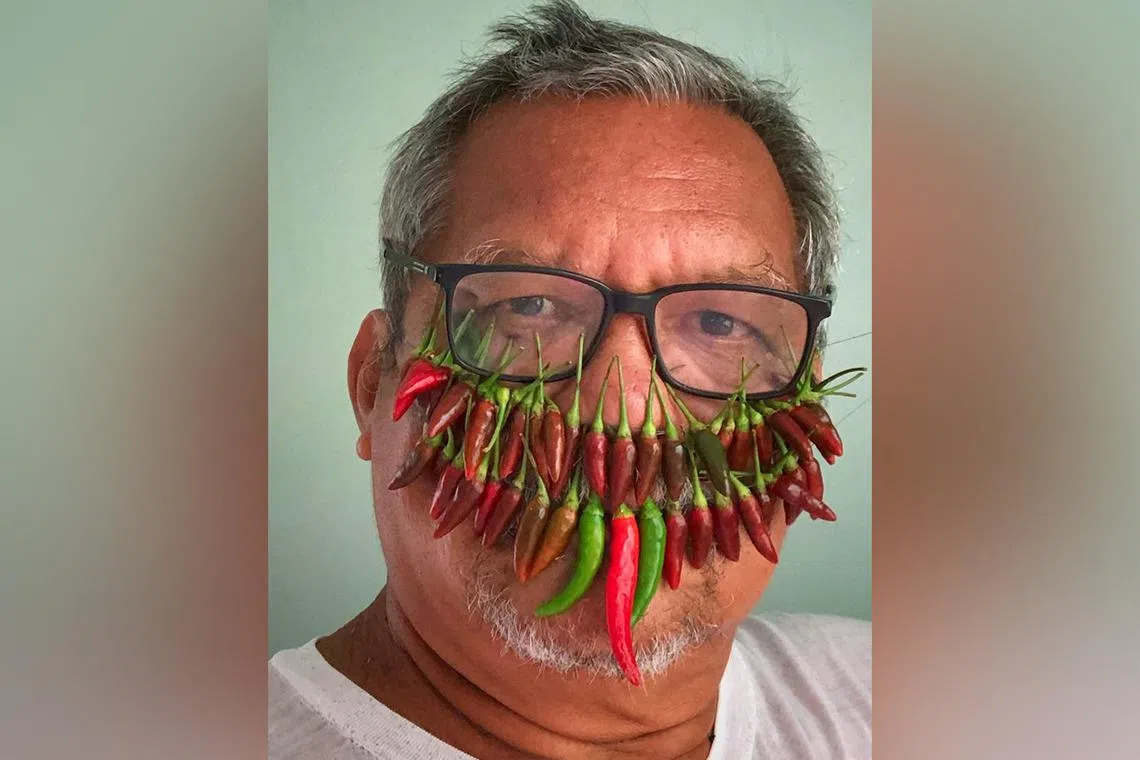Behind the bylines
‘The key thing is you do your homework’
Sign up now: Get ST's newsletters delivered to your inbox

Mr George Gascon, now retired, had landed the assignment of taking pictures of founding prime minister Lee Kuan Yew. He eventually became the preferred photographer for Mr Lee, capturing many unguarded moments.
PHOTO: COURTESY OF GEORGE GASCON
Follow topic:
George Gascon, 73
Mr George Gascon joined The Straits Times in 1992 after a stint as official photographer to former Philippine president Ferdinand Marcos. Just three years in, he was assigned to shoot Singapore’s founding prime minister Lee Kuan Yew during a two-hour interview for the book Lee Kuan Yew: The Man And His Ideas.
While Mr Lee was known to be a challenging subject, Mr Gascon’s persistence paid off – he eventually became Mr Lee’s preferred photographer, following him for seven years. He captured many intimate moments, including one where Mrs Lee gently combed Mr Lee’s hair before a shoot.
Mr Gascon, 73, who has two grandchildren, is now retired and living on a farm in the Cavite province in the Philippines.
He finds inspiration everywhere. During the Covid-19 pandemic, he embarked on a series of selfies of “face masks” using the fruits and vegetables from the farm.
“I was thinking that since everyone was not allowed to go out of the house without a face mask, then maybe a substitute mask would do,” he laughs.
Recollections
“Photographing Mr Lee Kuan Yew was the highlight of my career.
One evening, my boss just asked me: ‘Can you do the shoot?’ How can I refuse? I said, well yeah, I’ll try my best.
Then he asked me about lighting Mr Lee’s office for the shoot. ‘Will you bring and set up the lights?’ I was thinking, let me just do it the way I know how to do it.
I didn’t say anything, but for such shoots we should be very careful because it’s his office. If you set things up, he may not like it. It could ruin his mood.
So I told my boss later, I’ll just use the available light. But he said the room will be so dark. Well, photographers here in the Philippines practise even in almost total darkness. I’m used to that.
The issue was the time. Usually they give you like five, 10, 15 minutes. But I wanted to see if I could stay longer, and his people agreed.
The book was titled Lee Kuan Yew: The Man And His Ideas and two of the authors, Han Fook Kwang and Sumiko Tan, were there.
It was my first time being up close with Mr Lee. But there was something between him and me, so I knew I had to break that. I was thinking how to melt the ice. And then he just relaxed.
I heard later that he liked that I was not intrusive. He was not disturbed by my presence. Yeah, because I pretended to be like invisible, or something like that.
I started very slowly, one click, then another click. It’s so very slow, very slow because I’m also getting my bearings. I was walking around the table to get his back view, left side, right side, the front view and things like that. And then his people said: ‘Okay, time out.’
It was a toilet break. Fook Kwang asked me: ‘Hey George, can you do something about your camera? It’s so noisy.’ Now you can do something about it, but before, our cameras were not so nice. I said he’s not minding at all. So when he came back, we shoot again. Shoot, shoot, shoot.
The key thing is you do your homework. That’s basic, yeah, and it’s the way you carry yourself in front of him, because he will be also observing. As a photographer, that is important. I think he liked the way I photographed him because I wasn’t disturbing him. I wasn’t distracting.
Another memorable moment was when I had to go to the Istana one evening. He was having high tea with his ministers. I was ushered in, and he introduced me to the guys. Mr Lee said: ‘He takes pictures,’ pointing to me, ‘but he’s going back to the Philippines already. What a waste.’
That’s what he told the ministers, yeah.”

